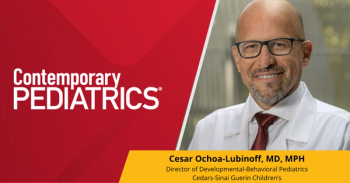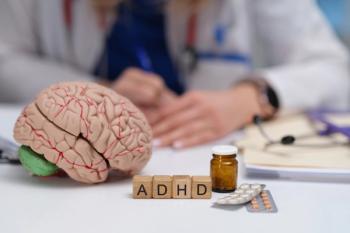
Prevalence of Pediatric ADHD
Robert L. Findling, MD, MBA, and Timothy Wilens, MD, discuss the prevalence of pediatric ADHD and how diagnosis has spiked in recent years.
Episodes in this series

Robert L. Findling, MD, MBA: Hello, and thank you for joining this Contemporary Pediatrics® Insights titled “Updates in the Management of Pediatric ADHD.” I’m Bob Findling, a professor and the chair of the department of psychiatry at Virginia Commonwealth University School of Medicine in Richmond, Virginia. I’m joined by my good friend Tim Wilens, the chief of the division of child and adolescent psychiatry and a codirector of the Center for Addiction Medicine at the Massachusetts General Hospital in Boston. We’re going to talk a little about updates on the management of pediatric ADHD, and particularly highlight a recent therapeutic approval and the practice implications this might have on patients and providers. Let’s begin. Tim, a good place to give context is the recent spike in the rate at which pediatric ADHD is diagnosed and the attention coming with it.
Timothy Wilens, MD: First, welcome. Thanks, Bob. There has been an increase in not so much the prevalence of ADHD but the diagnosis of ADHD. That’s a good thing. We used to think we were missing over half the cases, and now it seems less. We miss between one-quarter and one-third of the cases. But that means we’re diagnosing the other group. The rate has gone from around 6% about 20 years ago to 10% of children who’ve been diagnosed with ADHD at some time in their lives.
The diagnosis of ADHD seems to be increasing in some areas that we like, like understanding inattentive ADHD and diagnosis in girls. We realize that adolescents have it in the continuation of treatment. Probably the biggest area of increase has been discrepancies in diversity in terms of the diagnosis in some groups, but we need to do more. We’re missing the diagnosis in underrepresented racial and ethnic minorities. In other groups, the diagnosis is coming in at or around what we’d expect. There’s room to get better at getting the word out.
Robert L. Findling, MD, MBA: On some level, what you’re saying is that we’re picking up on people who previously might not have been given the diagnosis, even though they’ve suffered from it. Let me give you the flip side. I’m curious about your thoughts. Are more kids developing ADHD? Are there more kids out there with this? Or are we just getting better at recognition? Or is it maybe a little of both?
Timothy Wilens, MD: It’s the latter: a little of both. There are some leads that increase the likelihood of having ADHD. For example, coming from a family with ADHD is going to increase it. We think 2 things are happening. There are higher rates because of people with ADHD marrying other people with ADHD…and having kids. No. 2, there’s a bit of anticipation every year. The rates go up with certain disorders and manifest earlier. Then we have issues with preventable forms of ADHD. A big chunk of it—three-quarters—is genetic. But up to 10% of ADHD may be from in utero exposure to cigarette smoke because of mothers who smoke during pregnancy. That’s still accounting for it. Then there are questions about marijuana. Does marijuana increase the likelihood for ADHD if the mother smokes during pregnancy? That remains unanswered.
Transcript edited for clarity
Newsletter
Access practical, evidence-based guidance to support better care for our youngest patients. Join our email list for the latest clinical updates.











